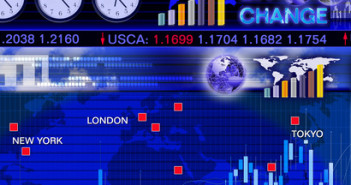Janet Yellen is not expected to repeat anything like the “6 months” comment made back March and leave markets guessing about the timing of the first rate hike, says Simon Smith of FxPro. Carney explicit comment about a hike could have preempted the meeting minutes, that could show that one member already voted for a rate hike.
In the interview below, Smith also discusses the impact of the crisis in Iraq and the effect of the ECB’s negative deposit rate. Enjoy:
Simon has over seventeen years experience of macro forecasting and investment strategy research. Prior to joining FxPro in May 2010, Simon was a consultant with Thomson Reuters, having spent four years as Chief Economist at Weavering Capital. He has held economic and strategy positions with Standard & Poor’s, together with consultancy firms 4Cast and MMS International. Simon holds an MSc. in Economics from the University of London and a BSc. from Brunel University.
Do you think that the Fed could hint about the timing of a rate hike? Could we see a repeat of the “6 months” comment that Yellen released in March?
No. March was clearly the actions of someone finding their feet in central bank speak, the art of which is never to give an answer that is too clear. She needs to take some lessons from previous Fed Chair Greenspan, who made an art of saying a lot and giving away very little. We are suffering from central banks trying to give us too much clarity, with forward guidance and the Fed’s very clear steady path of taping having contributed to the very low levels of volatility currently being seen.
Carney surprised the markets with his statement regarding a rate hike. Is he preparing us for the meeting minutes that could show some members voted for a hike? Or was there another motive?
I would not be surprised to see the minutes this week show at least one member voting for higher rates and this could well have been a motivation for Carney sounding more hawkish this week. Before Carney changed tack last week, I was of the view that there was an increased risk of higher rates this year. The risks of keeping rates low for long are increasing, not necessarily because of the housing market, but that is a factor at the margins. The economy is on a sounder footing and although the recovery may not be perfect in its balance, a pre-emptive rate hike means that the Bank is more likely to be able to deliver on its wish for a gradual normalisation in rates and it also removes an entrenched belief that low rates are here forever, which can create fresh problems for the future.
The negative deposit rate is now in place. EUR/USD is weaker than before the decision, but it did not crash. Are there signs that the new policy is having an effect on lending or flows?
It’s too early to tell in terms of the wider implications. We’ve seen the amount deposited back to the ECB fall by around half (compared to early June). But bear in mind that this was already on a downward trend, having fallen around 80% over the past year. Therefore the impact was always going to be muted and it was more as a deterrent to banks changing their behaviour in the future.
The violence in Iraq pushed oil prices higher, but the influence on the Canadian dollar seems marginal. Can we expect to see oil and the C$ move in tandem if oil prices go much higher?
Notionally, that remains one of the stronger bets, but the US has also increased its capacity in terms of energy production, so it’s not quite as clear cut as would have been the case in the past. If things do escalate, then those oil producers who are not at risk and have the capacity are likely to beef up output and benefit from the higher price. So CAD, NOK and less so USD will be the beneficiaries if events do take a turn for the worse.
Do the World Cup games have an influence on forex?
I’m leaving it to the Investment Banks to comment on that! I’ve not had the time to run a full-scale quantitative study on it.
Further reading: A negative deposit rate is not necessarily euro-negative
